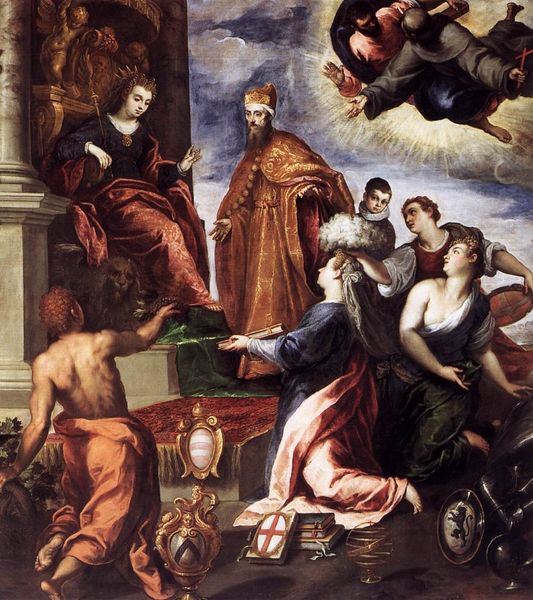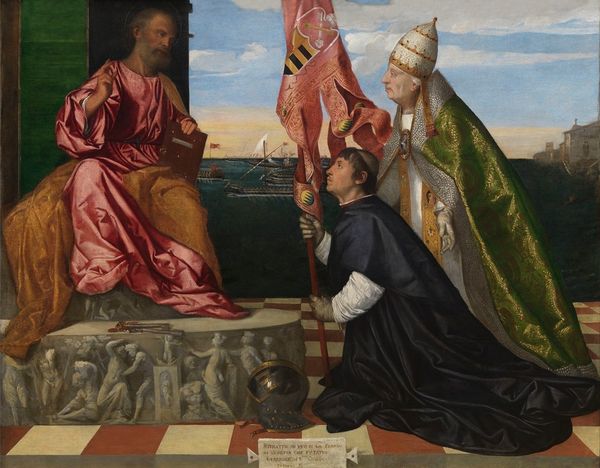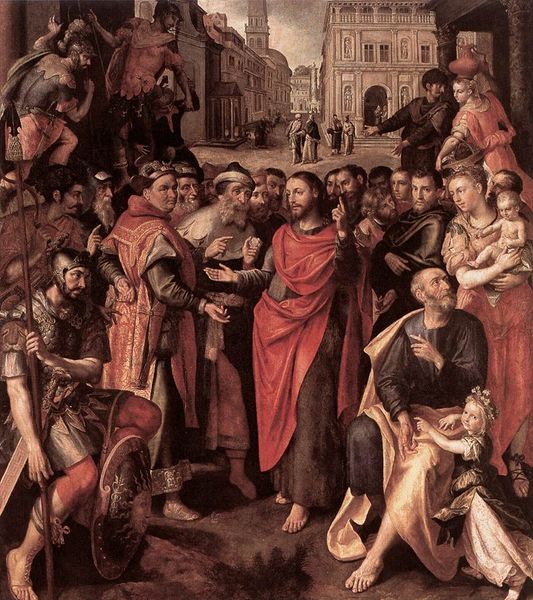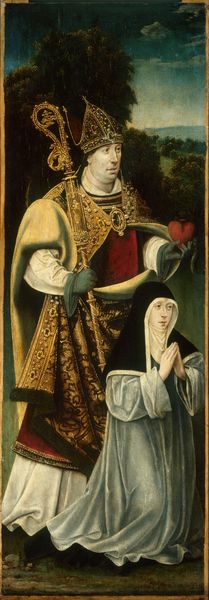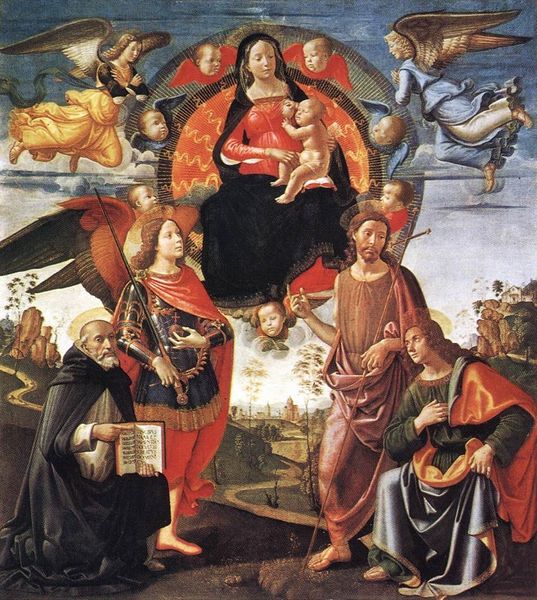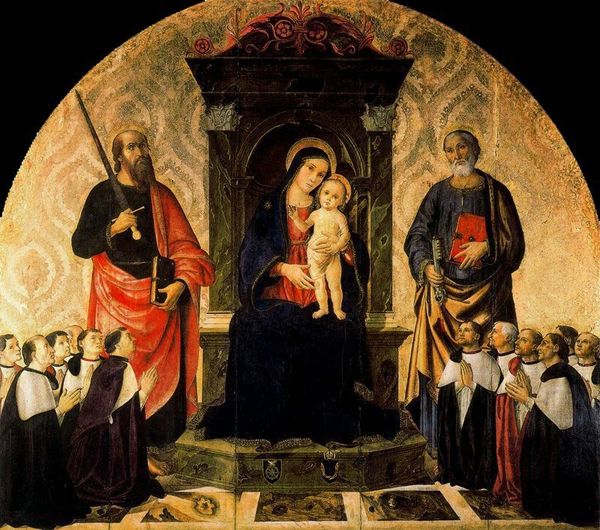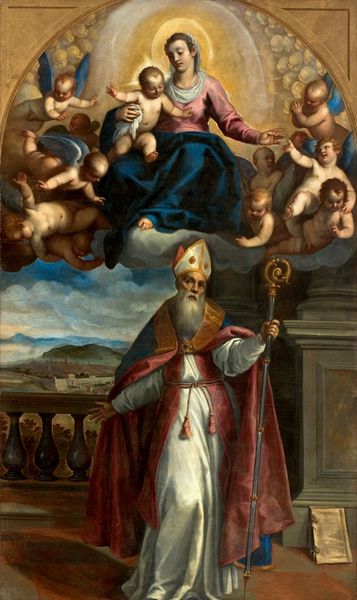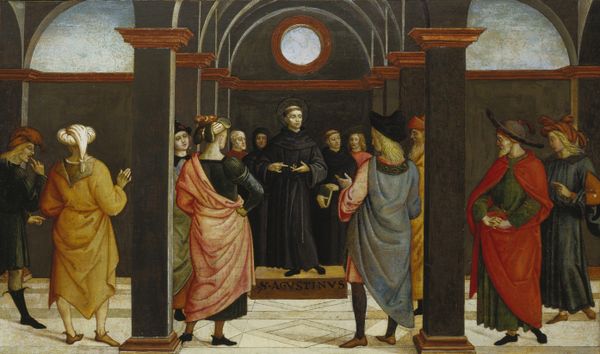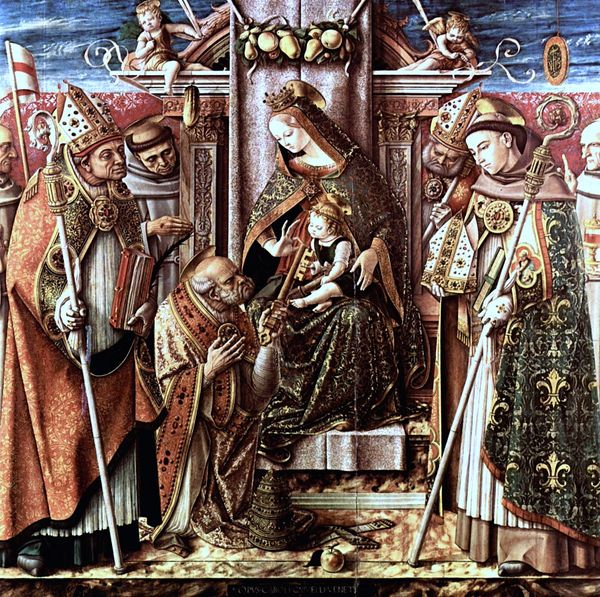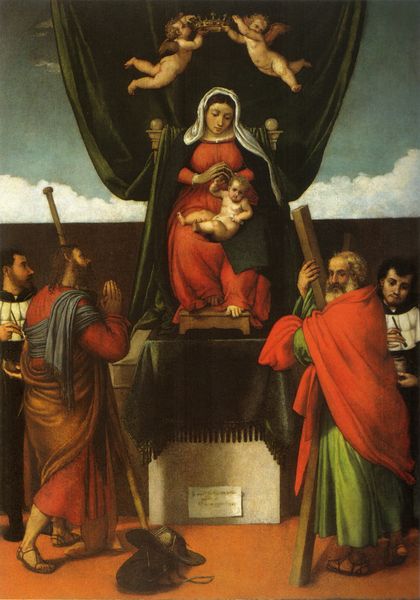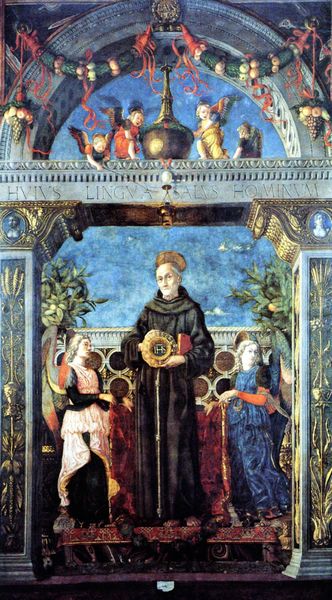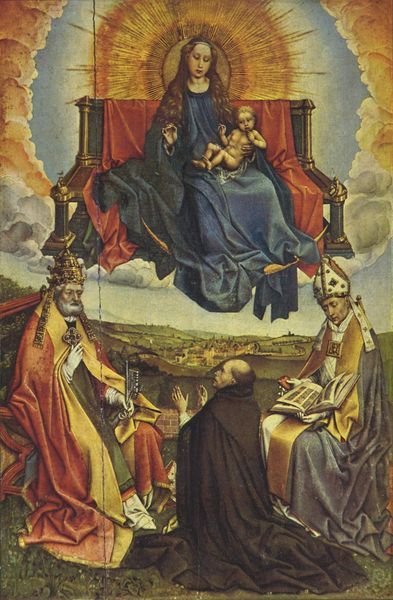
Madonna and Child with Saints Liberale and Francis (The Castelfranco Madonna) 1505
0:00
0:00
giorgione
Duomo di Castelfranco Veneto, Castelfranco Veneto, Italy
painting, oil-paint
#
portrait
#
high-renaissance
#
painting
#
oil-paint
#
landscape
#
figuration
#
jesus-christ
#
child
#
christianity
#
history-painting
#
italian-renaissance
#
virgin-mary
Dimensions: 200 x 152 cm
Copyright: Public domain
Curator: Looking at Giorgione's “Madonna and Child with Saints Liberale and Francis," painted around 1505, one immediately notices its somewhat detached atmosphere, wouldn't you say? Editor: Absolutely. There is a remarkable serenity, an almost dreamlike stillness in this oil painting. It's as if the figures exist in separate psychological spaces, connected but not quite engaging. The checkerboard floor provides a rational counterpoint to this dream. Curator: Indeed. The composition adheres to a strict geometric logic. Note the pyramidal structure, anchoring the Madonna and Child at its apex. It provides a sense of stability amidst the painting's gentle mood. But more compelling to me are the layered symbols woven throughout. The figures of Saint Liberale, the armored warrior with the banner, and Saint Francis are not merely aesthetic elements; they’re deeply rooted in local and spiritual identity. Editor: Saint Liberale, the patron saint, standing in full armor represents Castelfranco’s military prowess but is counterpointed by Saint Francis. He stands for humility, yet is rendered nearly at the same height and poise. The inclusion of these figures places the Virgin Mary not just in a divine sphere, but grounds her firmly within the earthly concerns and realities of the Venetian Republic. The architectural frame reinforces her sovereignty and power. Curator: And let us not forget the landscape. The positioning of the Madonna before an open landscape, framed architecturally, directs our gaze beyond the immediate space into a broader realm. Her gaze guides you into the unknown. She also seems physically disengaged and distant, perhaps she represents idealized divinity. Editor: Precisely! That liminal space, the background where everyday people occupy a sublime nature is itself an Italian cultural memory. It serves to constantly remind the public of the glory that may await. But the real brilliance of Giorgione’s work here lies in the seamless integration of the divine and the temporal. He gives the promise of Christian iconography and cultural continuity. Curator: So while the interplay of composition offers structural stability, the iconographic choices offer symbolic richness. Together these devices speak of the harmony between spiritual promise and earthly life. Editor: A fascinating and ultimately calming synthesis. Its visual poetry lingers long after one turns away.
Comments
No comments
Be the first to comment and join the conversation on the ultimate creative platform.
